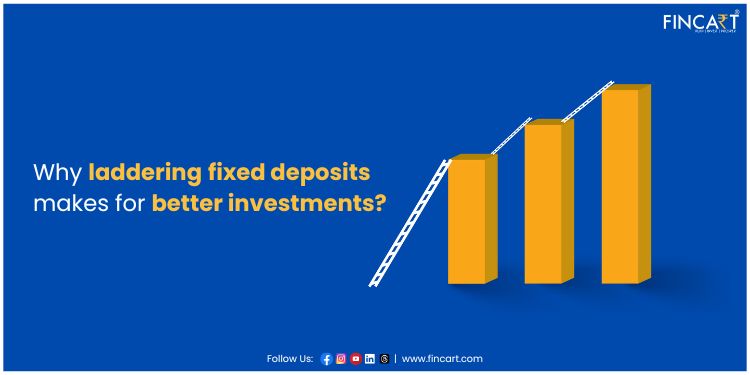Fixed deposits (FDs) have long been a favoured investment choice for those seeking stability and guaranteed returns. Especially popular among conservative investors, FDs offer a safe haven where capital is protected and returns are predictable. This makes them particularly appealing for individuals aiming to achieve short-term financial goals, such as saving for a vacation, building an emergency fund, or setting aside money for future expenses.
However, despite their many advantages, FDs are not without their challenges. Investors often face two significant risks: liquidity risk and re-investment risk. Liquidity risk arises when you need to access your funds before the FD matures, which can result in penalties and a loss of interest. Re-investment risk, on the other hand, occurs when the interest rates have dropped by the time your FD matures, forcing you to reinvest at a lower rate and potentially reducing your future income. Further, credit risk is usually minimal if you invest in FDs from trusted places like India Post, nationalized banks, or reputable private banks.
To navigate these challenges, a strategic approach known as laddering can be employed. Laddering your fixed deposits involves spreading your investment across multiple FDs with varying maturities. This technique not only helps manage liquidity and re-investment risks but also allows you to take advantage of changing interest rates. By creating a ladder of FDs, you can ensure that you have access to funds at regular intervals while also optimizing your returns over time.
How Laddering Works?
Consider you have Rs 5 lakh to invest. Instead of putting it all in a single FD, you can divide it into multiple FDs with different maturities (e.g., one year, three years, five years). This ensures that you have FDs maturing at regular intervals, providing periodic access to your money. Here’s how it helps:
Improved Liquidity: In an emergency, if you need ₹2 lakh and you have a single ₹5 lakh FD, breaking it would incur penalties on the entire amount. If you have five FDs of ₹1 lakh each, you can break only the number required (e.g., two FDs for ₹2 lakh), leaving the rest intact to continue earning interest.
Reduced re-investment risk: Re-investment risk occurs when you have to reinvest a matured FD at a lower interest rate due to market conditions. If all your money is tied in a single FD and rates drop, you’ll have to reinvest at the lower rate, reducing your returns. With laddering, only a portion of your investment matures at a given time, allowing you to reinvest periodically and potentially benefit from higher rates if the market conditions improve.
For example, in August 2008, the interest rate for a one-year FD at the State Bank of India was 10%. If you reinvested the FD in September 2009, the rate dropped to 6.5%, significantly reducing your returns. Laddering helps mitigate this risk by ensuring that not all your FDs mature at the same time, reducing the impact of fluctuating interest rates.
Optimization of Returns: By spreading your investments across multiple FDs with different maturities, you can optimize returns. If interest rates rise after creating a ladder, only a part of your investment is locked in at the lower rates, and you can reinvest the matured FDs at higher rates, improving overall returns. The longer-term FDs within your ladder would incur more significant opportunity losses, while the shorter-term ones would be less affected.
In February 2022, the State Bank of India (SBI) offered an interest rate of about 5.2% for a two to three-year FD. By February 2023, the rate had increased to 7% following multiple rate hikes by the Reserve Bank of India (RBI). An investor who locked in their entire investment at the 5.2% rate would miss out on the higher returns available in 2023. However, an investor with a laddered approach would have benefited from the rate hikes as portions of their investment matured and could be reinvested at the higher rates.
Ready to grow your wealth?
Partner with Fincart for expert investment planning and make your money work for you.
Implementing a Laddering Strategy
To create an effective FD ladder, follow these steps:
1. Assess Your Financial Goals: Determine your investment amount and the tenure over which you need liquidity.
2. Divide Your Investment: Split your total investment into multiple FDs with staggered maturity dates (e.g., 1-year, 2-year, 3-year, etc.).
3. Monitor Interest Rates: Keep an eye on interest rate trends and RBI policies to make informed decisions when reinvesting matured FDs.
4. Reinvest Wisely: As each FD matures, reinvest the principal and interest at the prevailing higher rates, if applicable, or adjust your ladder to fit your current financial goals.
Sample Fixed Deposit Laddering Strategy
| Investment Amount (Rs) | Number of FDs | FD Tenure | FD Amount (Rs) | Interest Rate (%) | Maturity Date |
| 500,000 | 5 | 1 year | 100,000 | 5.5 | 11-06-2025 |
| 2 years | 100,000 | 6.0 | 11-06-2026 | ||
| 3 years | 100,000 | 6.5 | 11-06-2027 | ||
| 4 years | 100,000 | 7.0 | 11-06-2028 | ||
| 5 years | 100,000 | 7.5 | 11-06-2029 |
This table illustrates a hypothetical laddering strategy with a total investment of Rs 500,000 divided into five fixed deposits (FDs) with staggered maturity dates and varying interest rates.
Conclusion
Laddering fixed deposits is a prudent strategy for managing liquidity and re-investment risks while optimizing returns. By spreading your investments across various tenures, you can ensure a steady flow of income, reduce the impact of interest rate volatility, and maintain the flexibility to meet unexpected financial needs. This method is particularly beneficial for investors with low-risk appetites, as it combines the safety of fixed deposits with a strategic approach to enhancing returns. Start laddering your fixed deposits today to make the most out of your investments!




